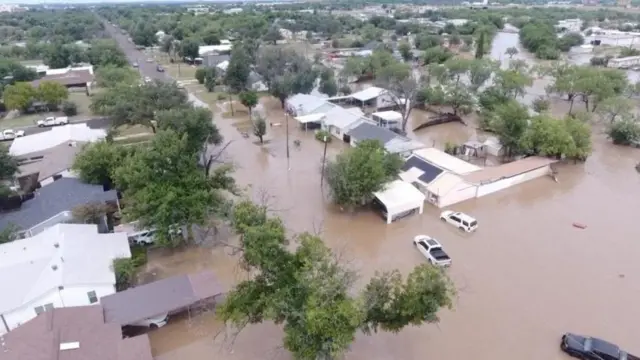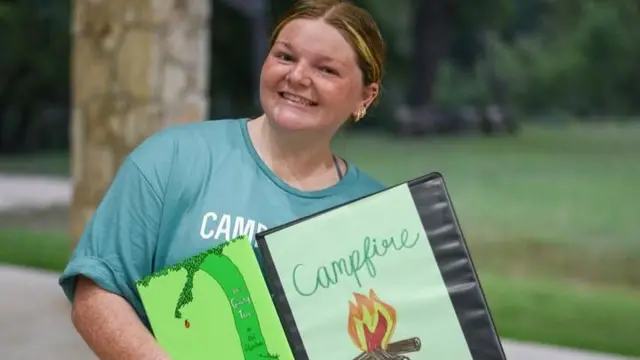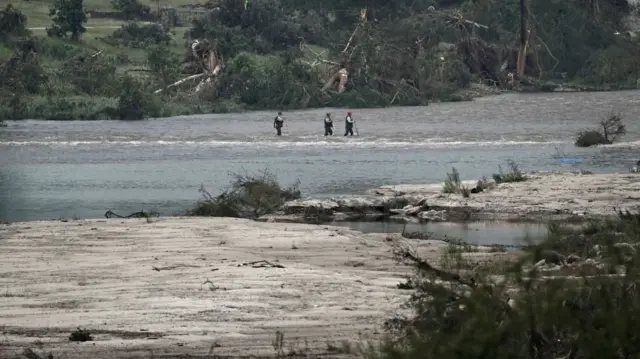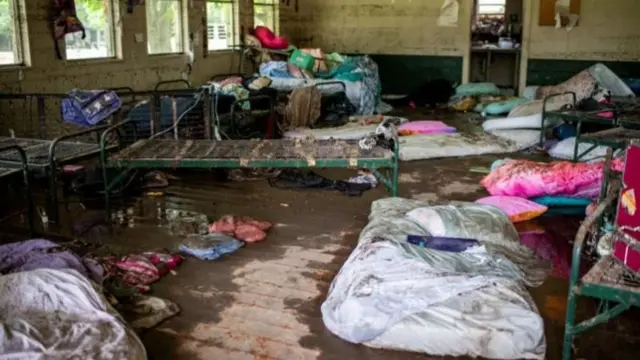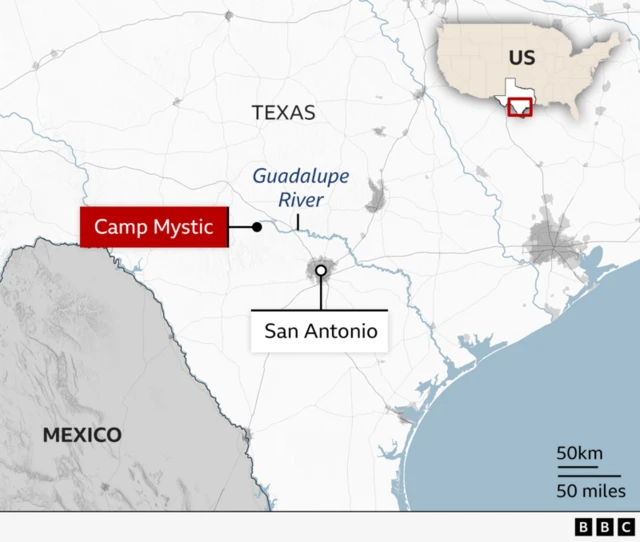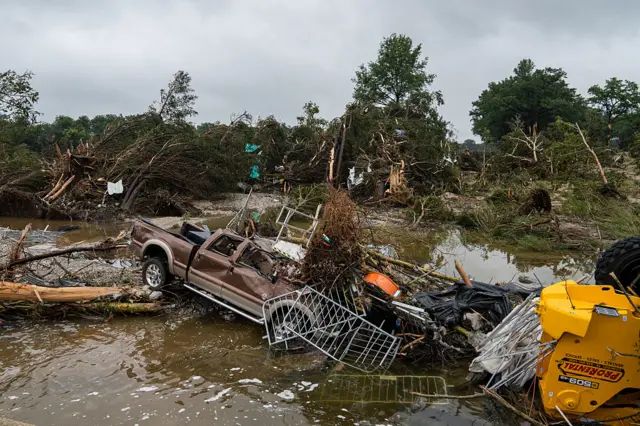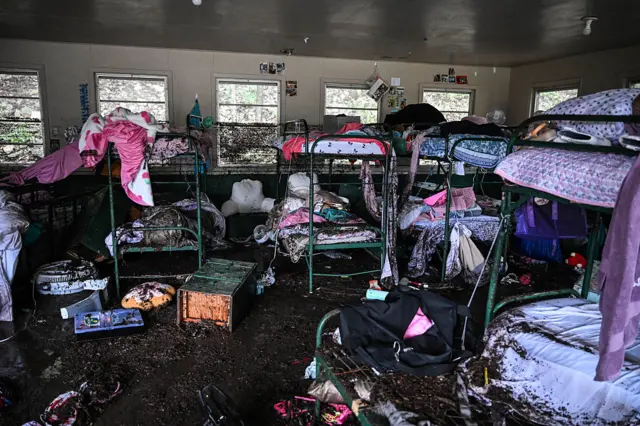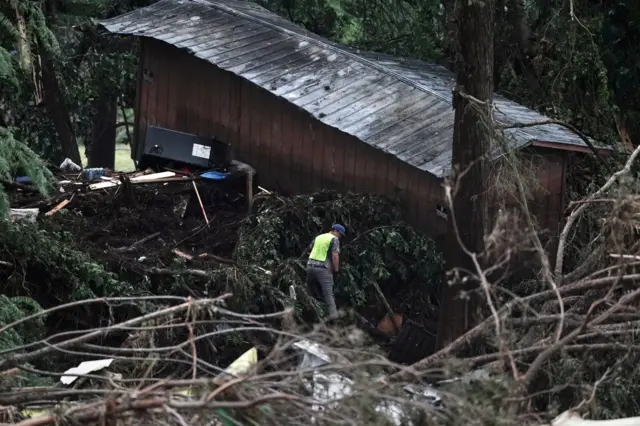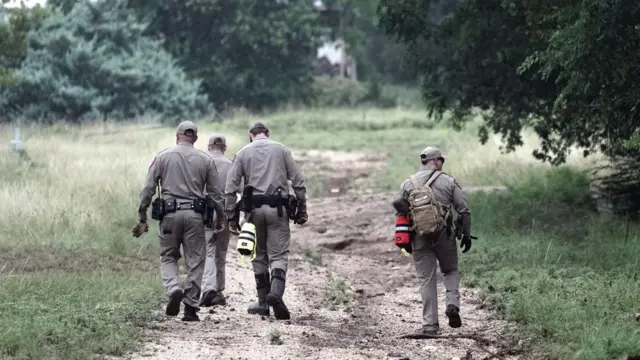Multiple factors contributed to these devastating floodspublished at 15:02 BST 7 July
 Matt Taylor
Matt Taylor
BBC Weather
Several factors came together to create the devastating outcome we saw in Texas last week.
First there was the weather patterns at the time.
The remnants of an ex-tropical storm had become embedded within a broader area of very unstable air within the region. Unstable air is air which has the ability to rise rapidly to form large storm clouds.
Tropical Storm Barry, that caused flooding across the Yucatan Peninsula in Mexico a week earlier, had tracked across the Gulf of Mexico to decay over north-east Mexico. This had meant there was already large supply of moisture in the atmosphere.
Wind patterns across the region at the time also resulted in a flow of humid, moisture-laden air from Gulf too.
The next factor was the geography and topography of the area: Kerr County, where the worst of the floods occurred, is a hillier area which forced moisture-laden air upwards helping to build huge storm clouds.
The ones that formed over the area were so large they effectively became their own weather system, producing huge amounts of rain over a larger area.
It was slow-moving, adding to the rain totals and creating further thunderstorms along a zone that continued to affect the area containing the Guadalupe River.
